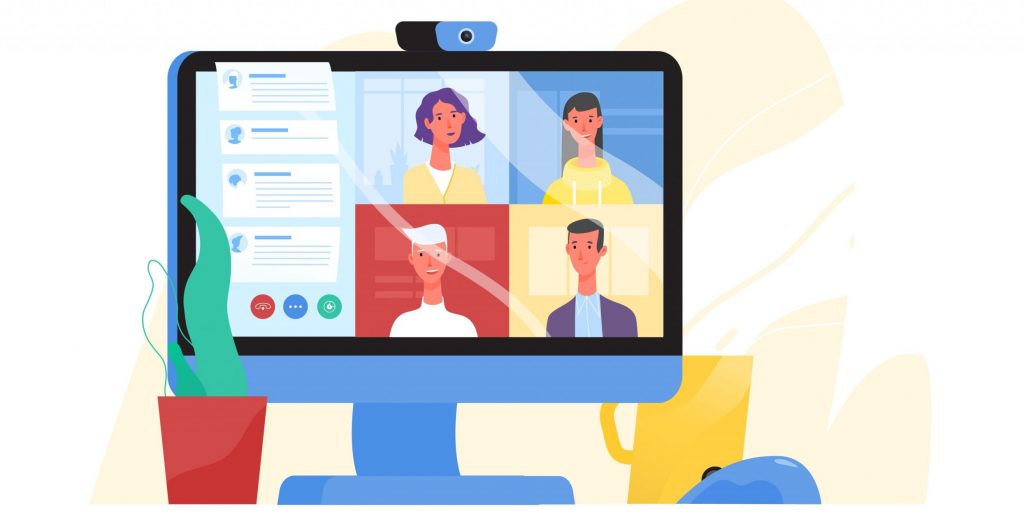The COVID-related lockdown has shown us that remote work can be effective and satisfying. However, even when well-managed, it can also present security challenges.
With decentralized teams, IT departments have to double their efforts to increase VPN capacities, enhance security protocols, and ensure remote teams won't fall victim to DoS, phishing, or any other attack.
Today, we'll review some of the most relevant remote team security threats and the ways to avoid a disaster.
What are the top 4 security risks for remote teams?
Unsecure networks
Believe it or not, a reliable and secure internet connection is not something that all remote workers have.
While IT specialists can control the security of all Wi-Fi networks in offices, home networks usually have weaker protocols (WEP, for example). This weakness makes it easy for attackers to hack the network and access business-sensitive data.
Working from cafes, hubs, or parks is even riskier. According to iPass, 62% of Wi-Fi-based security incidents took place over public networks.
So, letting your staff work remote without applying corresponding network security measures is like organizing a hacker safari.
Phishing attacks
Phishing is a type of social engineering attack mostly used to steal user credentials or bank account data.
An attacker convinces his target to access a malicious site using a tempting message, email, or link. The site, either operated by the attacker or compromised by him, activates a tool to manipulate the device operation as defined by the hacker.

Phishing is the most common method hackers use to reach confidential information. It’s also the most fruitful one: 90-95% of all successful cyberattacks are phishing attacks.
COVID-19-related email scams have been on the rise since the beginning of pandemic, and business mailboxes are not immune to them.
Insecure Passwords
Simple passwords are also amazingly simple to crack. And, since many people use the same password across multiple websites, hackers can often gain access to dozens of accounts in a glimpse of an eye.
Computer sharing and personal use
Even while we love and trust them, sharing a work computer with family members can pose a potential security risk, especially if you have access to confidential business or user data.
Still, many of the personal activities for which employees share their laptops are things they also do themselves. Who hasn’t streamed music while working or logged in to a personal Gmail account to solve an issue?
Such misuse doubles, or even triples, all of the above-mentioned risks, as personal passwords are usually weaker and used over multiple platforms.
How to address remote work security challenges
1. Adopt VPN usage
For regular users, VPN is something we switch on when we need to access a website that is restricted in our area. However, only using this technology for personal use is like hammering in nails with a microscope.
VPN adds a security layer to a network, including broadband and internet hotspots. Whatever you do through a VPN server cannot be intercepted by hackers or corporations.

It's only valid if your device was not compromised by malware before installation. Thus, it's recommended to run an antivirus software to eliminate the possibility of espionage before using a VPN.
2. Keep devices patched and up-to-date
Just like real patches that fix holes in our jeans, computer software patches are made to address specific flaws, bugs, or security vulnerabilities. These programs are an essential part of preventative maintenance that keeps devices up-to-date, stable, and secure.
Many cyberattacks exploit known security flaws of target systems. This means that a vast majority of breaches could be prevented if users simply updated their OSs and apps regularly.
Think of your system as a fortress with hackers hammering away at its walls trying to penetrate its breaches while patches are that bricks that fill in these gaps. Even though hackers are much faster at finding new vulnerabilities than good guys are at providing the "bricks,” it's better to install the patches as they are released – just to even the odds.
Check out a related article:
Top 3 Remote Team Management Challenges and Tips on How to Overcome Them
3. Educate your crew
Security training can help employees better understand how to detect and avoid phishing attacks and scams. According to a study conducted by Pensar, security-related risks are reduced by 70% if a company runs mandatory cybersecurity training.
By teaching your coworkers cybersecurity basics you will encourage them to stay vigilant and evade risky actions like clicking unknown links and downloading infected files.
4. Pay special attention to virtual meetings
It's almost impossible to imagine remote working without video conferencing. Although it is an optimal way to keep your team updated, it is also a security-sensitive matter. We've all heard the news about Zoom data breaches during the quarantine.

Here's what you should take care of before organizing a call:
- Enhanced privacy measures. To ensure that no unwanted or uninvited attendees join your video calls, make sure to switch on the “lock meeting” option.
- Password-protect meetings. Only allow access with a password, and only distribute that password among users who should attend the call.
- Check content sharing settings. Otherwise, you help unauthorized users download and benefit from your content.
5. Be proactive
Do you know this old army saying: a hard drill makes for an easy battle? In other words, it's better to be prepared.
Develop a procedure in case of a breach. Create security policies, and distribute them among workers to prevent possible failures. This will save you a lot of effort later, when the risk becomes a reality.
6. Provide clear security guidance
Another important thing is how you communicate your security strategy to your team. It's crucial to make sure each and every member of your crew gets the instructions and gets the instructions right.
Pay attention to the expertise level of your coworkers. While it may be enough for tech-savvy employees to hear the basic requirements, others may have difficulty understanding what to do and how to do it. Thus, you should pay special attention to security newbies.
Now, when the lockdown is over in most countries, it’s also a good time to analyze your actions from that time and assess how ready your organization is for the second wave.
Feel free to address our shortlist during preparation, and contact us if you have any questions or need cybersecurity services.

Leave a Comment